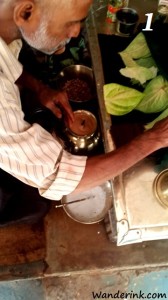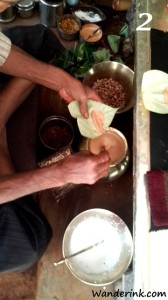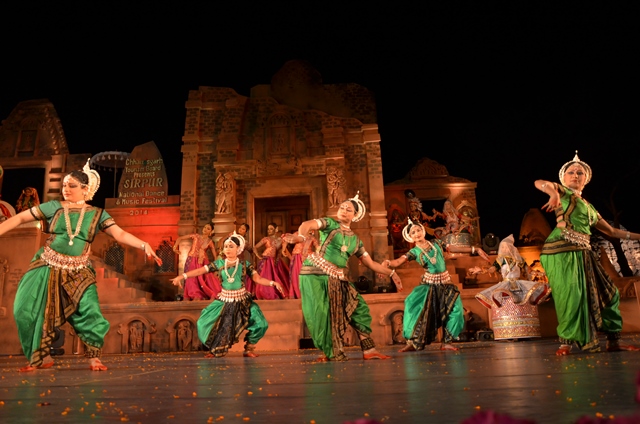Before the paan there is the paanwallah. So I will begin my paean to the paan with one for him: he is fantastically clever, can spot the nescient first time paaner without glancing up once from his gleaming tin-can assembly line. I can personally vouch for the ones in Lucknow and Banaras, the land which inspired the evergreen Khaike Paan Banaraswala song, a Holi, Diwali, marriage and birthday party staple. A digestive ditty whose calming, settling effect any DJ will swear by – just like paan itself after a hearty meal.
Maybe it was the faintest tremor in my order or the overly simplistic ‘meetha paan’ and he set about his task with all the smoothness of shifting into top gear. He did not ask me whether I fancied supari, katha or mukhwas, or to pick from a Kalkatta, Banarasi, Jagannathi or Maghai patha. Instead his hands flew over the heart-shaped leaves laid out straight and shiny, flitting in and out of the burnished canisters: in slow-shutter speeds or if you were drunk he would look like a male Durga. The closest I can think of equating my order today – I now proudly navigate my way around those silver cylinder cases, say no to gulkhand as it is too sweet, order him to spare me anything that makes me feel like I am chewing on ittar, ask seriously what is the specialty of the bhandar and can remain non-chagrined when I don’t receive a proper answer – is to asking a well-stacked vintner for a glass of wine.
A leaf from history
The betel leaf is the one constant across all varieties of paan – the names of which are too numerous to even get started with. Just to give you an idea let me tell you that the famous Banarasi Paan itself has more number of mutations than poll time promises. So my suggestion is you stick to meetha or sweet paan and keep an eye out on what goes in. Very rarely, unless you are a regular, does the kind of patha or leaf gets discussed (refer ‘Know your paan’ for the more popular varieties).
But whatever be your choice of patha, rest assured you are in safe hands. Apart from the digestive properties we all know it holds, betel leaves have several medicinal uses as well. It suppresses the kapha dosha (anti phlegmatic), is carminative (anti flatulent) and is a good source of calcium. It brings sugar levels under control, cures common colds and coughs and checks body odour. In Malaysia the leaves are used for relief from arthritis, joint aches and simple headaches. The Chinese use it to treat toothache while in Indonesia the asthmatic is prescribed betel juice. Forest dwellers once used to treat wounds sustained from hunting with betel juice. The wound is washed with it and covered with betel leaves and you are as good as new in just a couple of days. In all these countries betel leaves and paan chewing had been part of culture thousands of years before it came to India.
Of gods and divine stuff
The betel leaf is not just an all-encompassing efficacious apothecary but has quite a reputation as an aphrodisiac as well. Who else but the god of love, Lord Krishna himself, is believed to have been a great connoisseur of paan. More recently, Noor Jahan, a great beauty herself though known more for being the mother of Shah Jahan, popularised paan culture in Mughal courts. She believed rightly in its lip shading qualities. Understandably the paan even finds mention in the Kamasutra – but surprisingly the context is not sexual.
‘After cleaning the teeth and having looked into the mirror and having eaten a tambula (refer ‘Know your paan’) to render fragrance to the mouth should a person start his day’s work,’ wrote Vatsyayana in the sex opus.
Or maybe it was about testosterone charging up the day.
Panning the paan
For every up there is a down. The supari or areca nut with its lip-reddening and slightly woozy qualities is the main complement to the betel leaf for the purist paaner (one who wouldn’t say ‘meetha paan’ even at gun point). The Food Safety and Standards Act of 2006 made it mandatory that all supari packets should warn that chewing it was injurious to health. Studies have shown that areca nut contains alkaloids and polyphenols that are seriously carcinogenic. I wouldn’t dispute it as I know at least one person whose fatal oral cancer was traced to years of supari use.
Moderation is key here.
Know your paan – the dummy’s guide
Bhandar is a vendor (paan bhandar is a paan seller).
Gulkhand is a preserve made from rose petals. The thick syrup adds to the sweetness and the fragrance. After a dessert of gulab jamun or moong dal halwa, this one finds no place in my paan.
Katha is Hindi for catechu, an extract of acacia trees. Broadly, katha is a breath-freshening mixture of spices.
Meetha means sweet.
Mukhwas is mouth freshener consumed after snacks and comprises of fennel, anise and sesame seeds and sometimes gratings of coconut.
Supari is areca nut unless you are discussing gangsters.
Patha is Hindi for the betel leaf and there are three major types used in most bhandars:
Jagannathi leaves which are grown are in Orissa, rarely found in north India.
Maghai: comes from Bihar, is light green and soft. The better ones are reputed to melt in the mouth. Vendors in Delhi also refer to this as ‘local’ as Bihar is next door.
There is also the Kalkatta aka Bangla patha which comes from West Bengal, a shade darker than the rest and considered the best of the lot.
Badi (big), choti (small), chakli and kavni (wide and medium) are further sub sects. I have gawked at a guy specifying size at a bhandar in Patna.
Show your profound knowledge of the leaves by asking the bhandar keeper which patha he is using. Chances are likely that he will give a dismissive ‘local’ – which changes with location. In Delhi, it is mostly the maghai from Bihar. Ask him ‘maghai?’ and see his jaw drop. Hero!
Tambula paan is the most basic – the betel leaf wrapping the areca nut or just a bit of it. There is also the ‘tambaku’ paan which is powdered tobacco sometimes flavoured with spices.
Paan on the way
The numbered photographs in the story are explained as under:
(1) Washed and wipe-dried betel leaves are laid out. Time to try out the patha routine.
(2) A blob of slaked lime is spread over the leaf – this is primarily to hold the ingredients together.
(3) Sprinkle katha which gives it the astringent effect – the paanwallah may ask you sometimes if you need it. This is good especially if you just had your lunch.
(4) Chopped nuggets of areca nuts are added* for extra buzz. *Health warning: these are known to have carcinogenic effects.
(5) Gulkhand is added to most meetha paans but its sweetness and fragrance totally overpowers the betel leaf’s slightly pungent aroma which is addictive for the true paaner.
(6) Other garnishing includes chopped cherries, cardamom, cloves, fennel, etc. This is a flourish and components vary from place to place.
(7) Folded into a triangle and secured with clove if you are lobbing it right away, or maybe toothpick if packed.













2 Comments
Puneetinder Kaur Sidhu
What a yummy post. Finding it difficult to digest all this info…heading for the paan bhandar 😉
Admin
Happy you find yummy, the post 🙂 Yeah, to the bhandar, easy on the gulkhand.